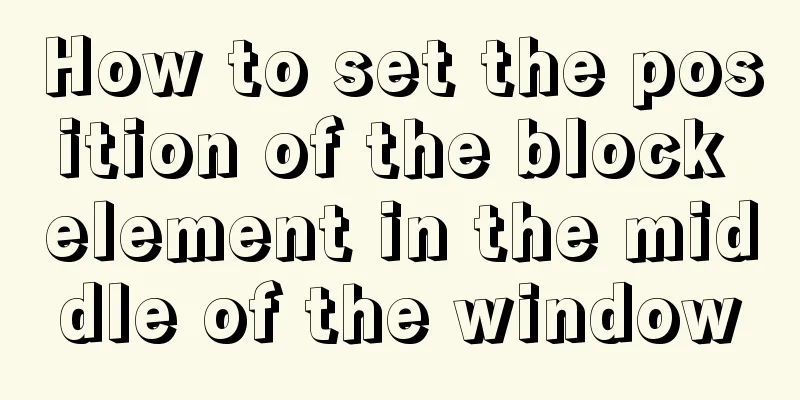How to query data within a certain period of time with Vue front-end and Django back-end

PrefaceDuring the development process, you will often encounter functions such as filtering queries, such as querying data within a certain time period instead of all data. In this way, we need to send the time period parameters to the backend, and then process the query on the backend. Here we use a simple example of Django backend and Vue frontend to record the general implementation. Backend databaseHere are some simple data. The important thing is the date. We need to filter and return it to the front end based on the date.
models.py class CountDownSign(models.Model): name = models.CharField(max_length=1000) date = models.DateField() sign = models.CharField(max_length=200) serializers.py The drf framework is introduced here, but the idea of filtering queries has nothing to do with this framework.
class CountDownModelSerializer(serializers.ModelSerializer):
class Meta:
model = CountDownSign
fields = '__all__'
def create(self, validated_data):
return CountDownSign.objects.create(**validated_data)
def update(self, instance, validated_data):
instance.name = validated_data.get('name', instance.name)
instance.date = validated_data.get('date', instance.date)
instance.sign = validated_data.get('sign', instance.sign)
instance.save()
return instance
views.py Provides an interface for filtering queries. Get the start and end dates delivered by the front end. The core code is as follows obj = models.CountDownSign.objects.filter(date__range=(start, end))
class CountDownViewSet(ModelViewSet):
parser_classes = [JSONParser, FormParser]
"""ViewSet"""
queryset = models.CountDownSign.objects.all()
serializer_class = CountDownModelSerializer
# Search search_fields = ('id', 'name', 'sign', 'date')
@action(methods=['post'], detail=False)
def getSE(self, request, *args, **kwargs):
start = request.data.get('start', None)
end = request.data.get('end', None)
if start and end:
obj = models.CountDownSign.objects.filter(date__range=(start, end))
if obj:
ser = CountDownModelSerializer(instance=obj, many=True)
print(ser.data)
return JsonResponse({
'code': '200',
'msg': 'Get data successfully',
'data': ser.data
})
else:
return JsonResponse({
'code': '1002',
'msg': 'Get failed',
})
else:
return Response(status=status.HTTP_204_NO_CONTENT)
Front-end interfaceHere are two date-pickers for receiving the start and end time, and binding events for the search. <div class="datePicker"> <div class="block" style="float: left"> <el-date-picker v-model="value1" type="datetime" value-format="yyyy-MM-dd" placeholder="Please select a start date"> </el-date-picker> </div> <div class="block" style="float: left; margin-left: 20px;"> <el-date-picker v-model="value2" type="datetime" value-format="yyyy-MM-dd" placeholder="Please select a deadline"> </el-date-picker> </div> <el-button round style="float: left; margin-left: 20px;" @click="searchC">Search</el-button> </div> data.js Implemented interface functions
export function searchCountDown(start, end) {
return request({
url: 'countDown/getSE/',
method: 'post',
data: {
start: start,
end: end
}
})
}
Click event implementation Determine the legitimacy of the input and accept the data for data binding display
searchC() {
console.log(this.value1);
console.log(this.value2);
if (this.value1 < this.value2) {
searchCountDown(this.value1, this.value2).then(res => {
console.log(res.data);
this.searchRes = res.data;
})
} else {
this.$message.error("Time range error");
}
},
Data display
<div class="article">
<ul>
<li v-for="(item,index) in searchRes">
<div class="ui grid" style="width: 100%;height: 60px;">
<div class="four wide column"><span>{{ item.name }}</span></div>
<div class="four wide column"><span>{{ item.date }}</span></div>
<div class="four wide column"><span>{{ item.sign }}</span></div>
<div class="four wide column">
<el-button type="danger" icon="el-icon-delete" circle @click="deleteC(item.id)"></el-button>
<el-button type="primary" icon="el-icon-edit" circle></el-button>
</div>
</div>
<div class="ui divider"></div>
</li>
</ul>
Operation Results It can be seen that the returned data are all within the time range. Here, the data returned at 0:00 on February 25th is actually the data of February 5th. Because the data is formatted, the data of the 25th is also returned.
SummarizeThis is the end of this article about how to query data within a certain period of time with Vue front-end and Django back-end. For more relevant Vue and Django data query content, please search for previous articles on 123WORDPRESS.COM or continue to browse the following related articles. I hope everyone will support 123WORDPRESS.COM in the future! You may also be interested in:
|
<<: MySQL NULL data conversion method (must read)
>>: Example of how to configure multiple virtual hosts in nginx
Recommend
About WeChat Mini Program to implement cloud payment
Table of contents 1. Introduction 2. Thought Anal...
Several common CSS layouts (summary)
Summary This article will introduce the following...
A general method for implementing infinite text carousel with native CSS
Text carousels are very common in our daily life....
RHEL7.5 mysql 8.0.11 installation tutorial
This article records the installation tutorial of...
JavaScript Basics: Scope
Table of contents Scope Global Scope Function Sco...
A brief discussion on the problem of Docker run container being in created state
In a recent problem, there is such a phenomenon: ...
The correct way to migrate MySQL data to Oracle
There is a table student in the mysql database, i...
How to deploy MongoDB container with Docker
Table of contents What is Docker deploy 1. Pull t...
Essential tools for web design: Firefox Web Developer plugin CSS tool set tutorial
The plugin is installed in the Firefox browser. T...
Discussion on the problem of iframe node initialization
Today I suddenly thought of reviewing the producti...
HTML table markup tutorial (48): CSS modified table
<br />Now let's take a look at how to cl...
Detailed explanation of the role of the new operator in Js
Preface Js is the most commonly used code manipul...
Case analysis of several MySQL update operations
Table of contents Case Study Update account balan...
In-depth analysis of the various backgrounds, usage scenarios and techniques of CSS
This article has been included on GitHub https://...
Detailed explanation of the default values of width and height in CSS: auto and %
in conclusion % of width: defines the percentage ...











